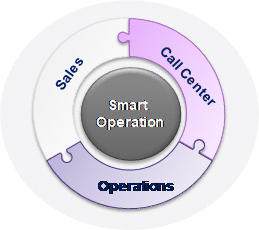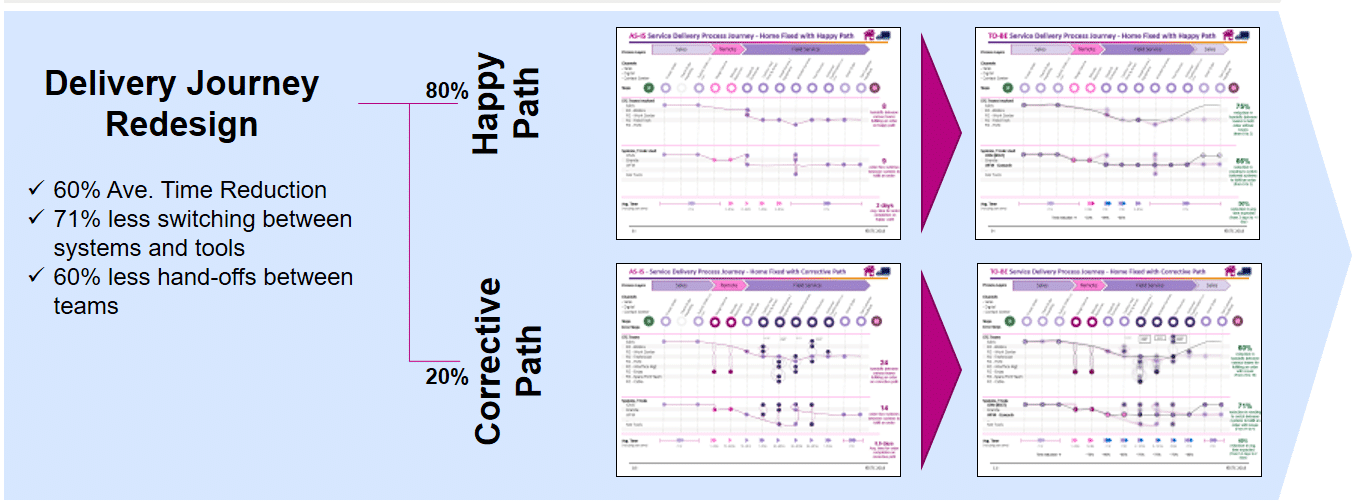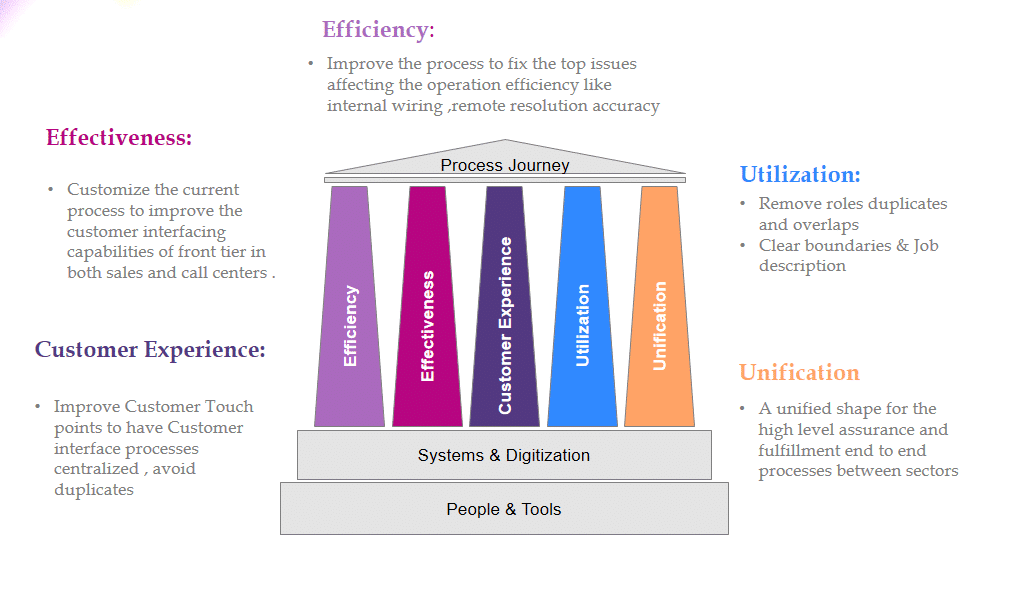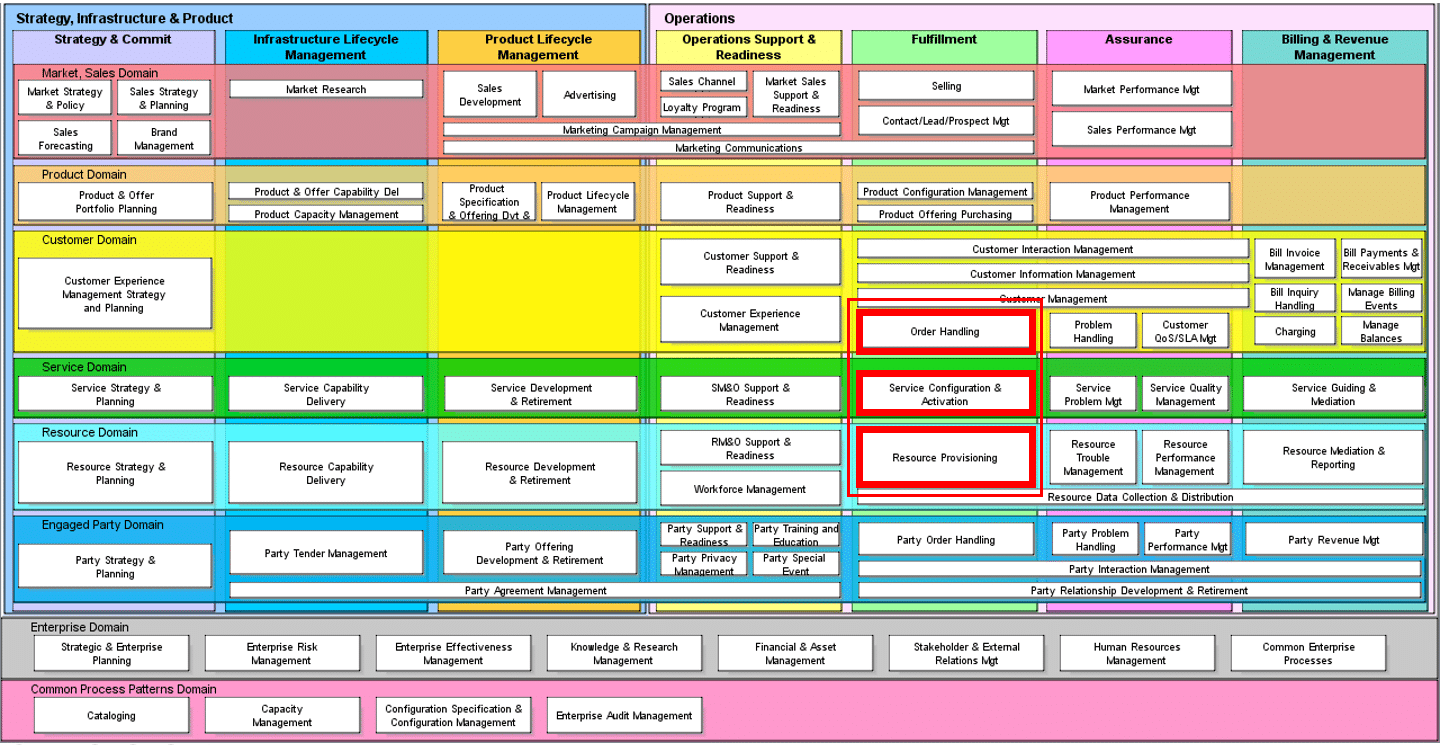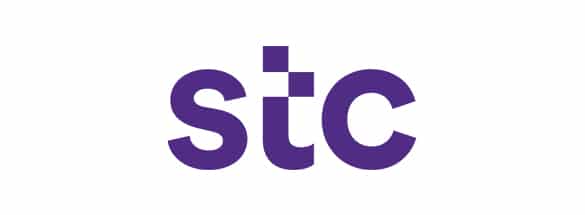 Company: Saudi Telecom Company
Company: Saudi Telecom Company
Area Name: E2E Customer Fulfilment Process Journey
Area Name: Design-Implementation Conformance
Frameworx Version: Version 17.5
Assessment Completion Date: September 2018
Summary results: Business Process Framework
Detailed Certification Report: Saudi Telecom Company E2E Customer Fulfilment FX17.5 Conformance Certification Report V1.0
Implementation Overview
STC- Customer Fulfilment Process Journey CBU, EBU, WBU and Operations Sectors’ Business Process Blueprint – Design & Implementation Overview
E2E Customer Fulfilment Process Journey is one of the biggest initiatives in STC which is the Operations Excellence Process Journey and Certification program, its main objective to enhance the way of doing business. The program is done with the participation of 200+ participants from 40+ departments for a smooth end to end process for the customers in services Fulfilment across all customers segments (CBU, EBU, WBU).
- CBU is the customer business unit.
- EBU is the enterprise Business unit.
- WBU is the wholesale business unit.
- OPS is the Operations Sector which is the lead for this initiative.
As an outcome from this program, a unified shape for the high-level Fulfilment end to end processes between sectors was introduced for the first time which will increase the usability and accessibility of the processes, eliminating gaps and duplication in process flows and creates a common language for use in all departments, in the use of systems, with external partners and suppliers, and reduce costs and risks in the implementation of systems, integration and procurement.
E2E Customer Fulfilment Process Journey covers three main E2E flows:
- Order to payment
- Request to change
- Termination to confirmation.
1. Order to payment O2P
- This process flow deals with all activities which convert the customer request or an accepted offer into a ‘Ready for use’ product.
- This process involves capturing customer order information, triggering the relevant provisioning process and handing over the order to the Service layer.
- Once the product is successfully provisioned, the customer order is closed, and the customer satisfaction is validated.
Business Scenarios:
|
Scenario |
Supported |
|
Customer contacts STC to place an order for a new product |
Y |
|
Customer contacts STC to place an order for a new product similar to existing |
Y |
|
Customer contacts STC to place an order for a new product that can be self-installed |
Y |
|
Customer contacts STC to request an amendment to an open order |
Y |
|
Prospective Customer contacts STC to place an order for a new product |
Y |
|
Prospective Customer contacts STC to place an order for a new product similar to existing |
Y |
|
Prospective Customer contacts STC to place an order for a new product that can be self-installed |
Y |
2. Request to change R2C
- This process flow deals with all activities which convert the customer ‘s change request into a ‘Ready for use’ product.
- This process involves capturing customer order information, triggering the relevant provisioning process and handing over the order to the Service layer.
Business Scenarios:
|
Scenario |
Supported |
|
Customer contacts STC to request changes to original commitment to move new service |
Y |
|
Customer contacts STC to request a suspension of a service for a fixed period |
Y |
|
Customer contacts STC to request a suspension of a service indefinitely |
Y |
|
Customer contacts STC to cancel their open order |
Y |
|
Customer contacts STC to resume partial services that were suspended |
Y |
|
Customer contacts STC to resume full services that were suspended |
Y |
|
Customer contacts STC to request a change in credit limit |
Y |
|
Customer contacts STC to renew a contract |
Y |
|
Customer contacts STC to change service with dispatch required (Speed upgrade) |
Y |
3. Termination to confirmation T2C
- This process flow deals with all activities related to the execution of customer ‘s termination request.
- This process involves retention activities, capturing customer order information, triggering the relevant provisioning process and handing over the order to the Service layer.
Business Scenarios:
|
Scenario |
Supported |
|
Customer contacts STC to terminate a service |
Y |
|
STC discontinues the customer service due to collection |
Y |
These three process flows consist of three Level-2 core processes along with the 21 Level-3 Processes represent the constituents of these end to end flows which is the master Fulfilment process for all sectors which participated in this initiative.
The fulfillment consists of three Level-2 core processes which are:
- Customer order handling in the customer domain
- Service Configuration and Activation in the service domain
- Resource Provisioning in the resource domain
To ensure consistency and promote standardization the following principles, techniques, standards and best practices are observed for process design, implementation and improvement:
The process journey has six dimensions and strategy pillars which were considered during the design and implementation of the E2E process, these dimensions are depicted in the below figure:
Design and Implementation principles
- Effectiveness
- Reduce non-value adding activities
- First time right
- Reduce Cycle time
- Reduce number of hand-offs
- Reduce Human Intervention
- Unification
- Unified shape for the E2E Fulfilment processes between business segments and operations
- Reduction of process variants
- Standardization of processes (in line with GB 921U)
- Efficiency
- Improve the process to fix the top issues affecting the operation efficiency like internal wiring, remote resolution accuracy
- Compliance to business process frameworks
- Common Governance structure for review conformance and maturity of process design.
- Utilization
- Remove roles duplicates and overlaps
- Clear boundaries & Job description
- Reusable components
- Customer Experience
- Customer Insightfulness of processes
- Improve Customer Touch points to have Customer interface processes centralized, avoid duplicates
- Systems & Digitization
- Convert Conceptual process model which are Process Journey To-Be Processes to Executable process model digitized Processes.
Business Process Framework Level 2 Process Scope
The following figure represents the scope of the assessment based on the Business Process Framework (eTOM) v.17.5. The Level-2 processes highlighted in red, and all their Level-3 constituents were submitted for conformance certification.
For any additional information on this Frameworx Conformance Certification Report, please contact TM Forum at [email protected].
Summary Results: Business Process Framework
